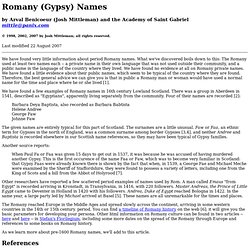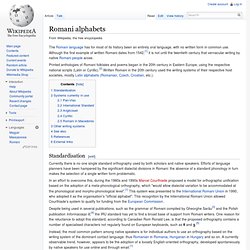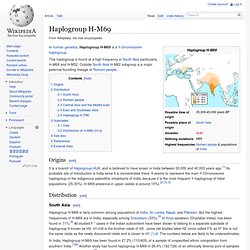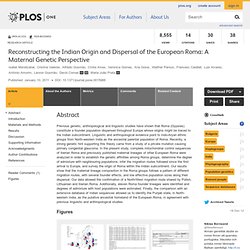

Untitled. Information for first-time researchers - Record Office - Leicestershire County Council. How to get started Decide which branch of the family you wish to trace first and obtain as much information as you can from surviving relatives.

It will help you greatly if you gather together and organise all the family information you can before diving into the Record Office's many resources. it is best to work back from the earliest event for which you have definite evidence. investigate what records survive within the family such as certificates, wills, photographs, funeral cards. It may be useful at this stage to draw up a family tree with exact dates & places of birth, marriage and death marked on.
This would be useful for yourself and also for the staff when you need their help. Remember that many records from the past have not survived or may be difficult to read so be prepared for disappointments. So what sources do we hold here? Roads to your past. From Oxford's Gipsy Hill and Windsor's Tinkers Lane to Worthing's Romany Road, the historical contribution of Britain's 300,000 Gypsies and Travellers is hinted at in place names across the south-east of England.

Yet despite being here for at least 500 years, the history and culture of Britain's travelling peoples has rarely been visible within public museums, libraries and archives in the region. But an innovative project, based at Surrey History Centre is set to change all that. Funded by the European Union and the South East Museum Library and Archive Council, the Traveller Project was designed to encourage greater access to the region's museums, libraries and archives for the region's large Gypsy and Traveller population.
The project was the British contribution to a 3 year pan-European effort to remove barriers in accessing cultural heritage. But what exactly is the community's experience of museums, libraries and archives? Report Part 1 - Front page to page 4 2. 5. 6. 7. Tracing Gypsy Romany and Traveller Ancestors at Surrey History Centre. Despite being one of Surrey's largest and oldest ethnic minorities, references to Gypsy Romany and Traveller peoples are often hidden within the historical record.

This makes tracing Traveller ancestry a challenge but with a bit of detective work sources can be unearthed and Surrey Heritage holds an array of archives, photographs and published works to help you. Historical and cultural definitions Gypsies are thought to have arrived in Britain from the northern Indian sub-continent around 1500. The Romany language has its roots in Hindi but suggests a migration via the Middle East into South Eastern Europe.
The first reference to Gypsies in England occurs in 1514 and as it was believed they came from Egypt they were first called 'Egyptians'. Terminology. Romany (Gypsy) Names. By Arval Benicoeur (Josh Mittleman) and the Academy of Saint Gabriel mittle@panix.com © 1998, 2002, 2007 by Josh Mittleman; all rights reserved.

Last modified 22 August 2007 We have found very little information about period Romany names. What we've discovered boils down to this: The Romany used at least two names each -- a private name in their own language that was not used outside their community, and a public name in the language of the country where they lived. We have found no evidence at all on Romany private names.
We have found a few examples of Romany names in 16th century Lowland Scotland. Barbara Deya Baptista, also recorded as Barbara Babtista Helene Andree George Faw Johnne Faw The given names are entirely typical for this part of Scotland. Another source reports: Roma and Gypsies. Ruska Roma. Northern Romani dialects. Northern Romani is group of dialects of the Romani language spoken in various Northern European, Central European and Eastern European countries.

The first grammatical outline of Romani was done on Sinti variety.[2] Dialects[edit] Elšík [3] uses this classification and dialect examples (geographical information from Matras [2]): References[edit] Romani language. Romani (/ˈroʊməni/;[7] also Romany, Gypsy, or Gipsy; Romani: romani ćhib) is any of several languages of the Romani people belonging to the Indo-Aryan branch of the Indo-European language family.[8] According to Ethnologue, seven varieties of Romani are divergent enough to be considered languages of their own.

The largest of these are Vlax Romani (about 900,000 speakers),[9] Balkan Romani (700,000),[10] Carpathian Romani (500,000)[11] and Sinte Romani (300,000).[12] Some Romani communities speak mixed languages based on the surrounding language with retained Romani-derived vocabulary – these are known by linguists as Para-Romani varieties, rather than dialects of the Romani language itself.[13] The differences between various varieties can be as big as, for example, differences between various Slavic languages.[14] Name[edit] Romani orthography.
The Romani language has for most of its history been an entirely oral language, with no written form in common use.

Although the first example of written Romani dates from 1542,[1] it is not until the twentieth century that vernacular writing by native Romani people arose. Printed anthologies of Romani folktales and poems began in the 20th century in Eastern Europe, using the respective national scripts (Latin or Cyrillic).[2] Written Romani in the 20th century used the writing systems of their respective host societies, mostly Latin alphabets (Romanian, Czech, Croatian, etc.).
Standardisation[edit] Currently there is no one single standard orthography used by both scholars and native speakers. Efforts of language planners have been hampered by the significant dialectal divisions in Romani: the absence of a standard phonology in turn makes the selection of a single written form problematic. Rajasthan. Rajasthan (/ˈrɑːdʒəstæn/; Hindustani pronunciation: [raːdʒəsˈt̪ʰaːn] ( )), known as "the land of kings", and old name was Rajputana [1] is the largest state of the Republic of India by area.

It is located in the west of India. Romani language. Free Romany (Romani) Dictionary - Free Romany (Romani) Grammar. Romani (Romany) English and English Romani (Romany) Dictionary Free Online Translation. Romani English dictionary and English Romani dictionary - FREELANG. Haplogroup H (Y-DNA) In human genetics, Haplogroup H-M69 is a Y-chromosome haplogroup.

This haplogroup is found at a high frequency in South Asia particularly H-M69 and H-M52. Outside South Asia H-M82 subgroup is a major paternal founding lineage of Romani people. Reconstructing the Indian Origin and Dispersal of the European Roma: A Maternal Genetic Perspective. Previous genetic, anthropological and linguistic studies have shown that Roma (Gypsies) constitute a founder population dispersed throughout Europe whose origins might be traced to the Indian subcontinent.

Linguistic and anthropological evidence point to Indo-Aryan ethnic groups from North-western India as the ancestral parental population of Roma. Recently, a strong genetic hint supporting this theory came from a study of a private mutation causing primary congenital glaucoma. Heathenry. Rroma.org. Society for Threatened Peoples. Society for Threatened Peoples International STPI (German: Gesellschaft für bedrohte Völker-International, GfbV-International) is an international NGO and human rights organization with its headquarters in Göttingen, Germany. It claims to create awareness of and protect minority peoples around the world who are threatened by oppressive governments. The group states on its website that it "campaigns against all forms of genocide and ethnocide". It has advisory status at the United Nations, participatory status with the Council of Europe and has branches in Germany, Austria, Switzerland, Italy, Bosnia and Herzegovina, and Iraqi Kurdistan.
The Secretary General of the Society for Threatened Peoples International (STPI) and Society for Threatened Peoples-Germany (STP) is Tilman Zülch.[1] History[edit] The Society for Threatened Peoples Germany emerged in 1970 from the Hamburg based “Aktion Biafra-Hilfe”. Gipsyroad : Message: Re: [gipsyroad] Gypsies from Eastern/Central Europe in the USA. MY FRIENDS, THE GYPSIES. By Lawrence Bohme My town, Montefrio, has a large gypsy community, and over the years the local gitanos have, I believe, come to think of me as their friend. I have always been fascinated by gypsies, and even thought of myself as one at heart, having lived in a footloose way. The history of their travels is, as you will see, even more fantastic than that of the Jews, although being unwritten, much more obscure. We now know that the gypsies originated in the Punjab in northwestern India, fleeing from the region during the clashes between invading Arab and Mongolian warriors, a thousand years ago.
Gypsies in the United States. Carlos de Wendler-Funaro Biography. According to information supplied by Mrs. de Funaro, Carl de Wendler-Funaro was born in Brooklyn ,New York ,on October 12, 1898. After attending Boys' High School and Erasmus Hall High School in Brooklyn, he attended the University of Illinois and Cornell University, receiving a bachelor's degree in entomology from Cornell in 1923. Subsequently, he taught foreign languages at New York University, the McBurney School of the YMCA in New York City, Newark Academy Brooklyn, New York. Carlos de Wendler-Funaro, second from left, shows his photographs to a group of Rom, c. 1940. Smithsonian Institution, National Museum of American History Archives Center and Wagner College. The Rom. "Gypsies" in the United States. "Gypsies" in the United States Several groups, all known to outsiders as "Gypsies," live today in the United States.
In their native languages, each of the groups refers to itself by a specific name, but all translate their self-designations as "Gypsy" when speaking English. Romani_population_average_estimate.png (PNG Image, 788x596 pixels) - Scaled (88. Romanis-historical-distribution.png (PNG Image, 502x533 pixels) - Scaled (98. Roma people - Google Search. Romani people. Romanichal. Romani people by country. Names of the Romani people.